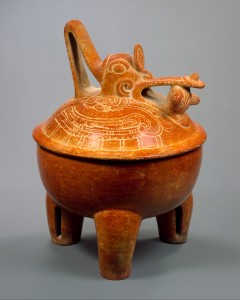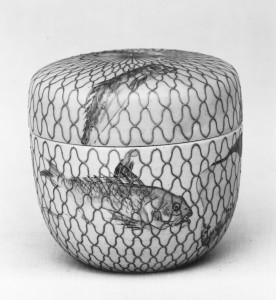Create a container with a lid that is at least 6″ x 6″. The lid should be designed so that it securely fits on the form using a flange, lid seat or equivalent design.
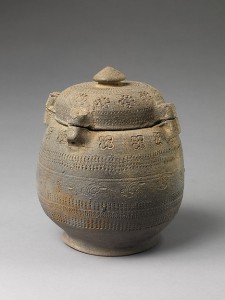
http://www.metmuseum.org Period: South and North Kingdoms period, Unified Silla (676–935) Date: 8th century Culture: Korea
Artists Research: In the classroom look at examples of lid styles: flange, lid seat, ginger jar then select two of the vessels shown on this page that interest you. Sketch the form in your notebook, record when and where it was made. On your sketch draw how you imagine the lid is designed to fit on the vessel. (Does it have a lid seat? a flange? is it a ginger jar?) Continue your research independently, seek out artworks and resources that will help you determine the look and design of your piece.
Artists Plan: Create at least three sketches of different vessels with lids. Include embellishment plans in your sketches. Be descriptive with your plans to show how the lid is designed to fit the pot. It is recommended that you build a maquette for your final planning step.
Art Making Skills: Focus on refining your craft while building this project. Build it well, build it right using coil, pinch and or slab methods. Do not work solid and then scoop out your work later, that is not an example of improving art making skills already learned and practiced in class.
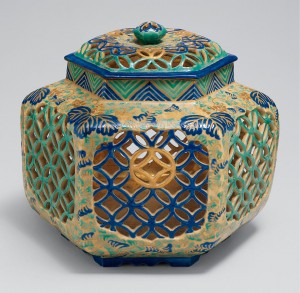
http://www.metmuseum.org
Period: Edo period (1615–1868)
Date:18th century Culture: Japan
Artists Observe: Consider the proportion of the size of the lid to the size of the container, do they work in harmony? Pay careful attention to the details such as the shape and thickness of how the lid and jar meet. Make a clear decision about how the foot of the vessel departs from the tabletop.
Artists Solve Problems: Stick with it! Work through different possible solutions and try some when your plans don’t work as easily as you thought. Get suggestions from your peers. Before you change ideas or projects you must arrange a conference with the teacher.
Artists Reflect: Document your process and completed work in a blog post. Some questions you might address: What was successful about this work? What were some challenges? How would your process, form, time management change if you were building this art work again?
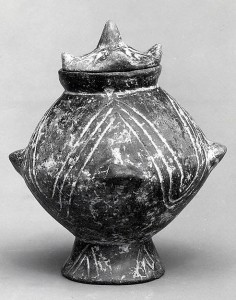
http://www.metmuseum.org Period: Early Bronze Age II Date: ca. 2700–2400 B.C. Geography: Northwestern Anatolia Culture: Yortan
